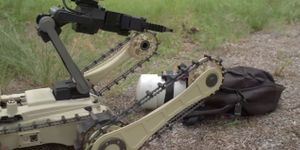Birds and Fish Exploit 'Wakes' to Move in Groups Without Colliding
When birds and fish move around, they often do so in large groups. These groups are called flocks in the bird world, but when it comes to fish, we commonly refer to these groups as schools.
Image Credit: Pixabay
Regardless of the nomenclature at work here, researchers have long pondered about how these animals move in such large groups without colliding with one another or separating from the group; after all, these animals are known for their quick maneuvers. Unfortunately, the mechanisms that make this possible are not well understood and have eluded scientists since the dawn of time.
In a lucky turn of events, however, a curious team of researchers from New York University seems to have uncovered an essential piece of the puzzle. Their findings, recently published in the journal Proceedings of the National Academy of Sciences (PNAS), propose that a wake produced by the leading animals in the group could have something to do with it.
"Air or water flows naturally generated during flight or swimming can prevent collisions and separations, allowing even individuals with different flapping motions to travel together," elucidated Joel Newbolt, the lead author of the paper. "Notably, this phenomenon allows slower followers to keep up with faster-flapping leaders by surfing on their wake."
Related: Study confirms that some birds sleep while flying
This wake, which is generated as the animal’s fins or wings slice through the water or air, guides the follower animal(s) in the right direction. But more importantly, it manufactures a force that helps to reduce the amount of energy required for the follower animals to keep up with their leaders – in essence, they ‘surf’ this wake.
The latter fact has significant implications in and of itself, and the researchers suggest that we could exploit this very same trick to capture energy through wind and water more efficiently than we are already.
"While we currently use wind and water to help meet our energy needs, our work offers new ways to more efficiently leverage them as we seek new methods for enhancing sustainable practices," added Leif Ristroph, a co-author of the paper.
Related: New evidence for climate change-driven extinction in tropical birds
The researchers reached their conclusion after performing an in-lab experiment in which they created a robotic hydrofoil system to simulate a school of two fish. In their observations, they found that the wake prevented the follower hydrofoil from colliding with the leader; it also prevented the follower hydrofoil from deviating away from the leader. In other words, the wake kept the follower locked inside of a perpetual ‘sweet spot.’
In large flocks of birds or schools of fish, the mass of animals performing the same action and moving in the same direction would create a far more powerful wake than the small-scale model demonstrated in this study. On the other hand, it’s a step in the right direction regarding better understanding how these animals exploit the laws of physics.
Source: EurekAlert, PNAS









